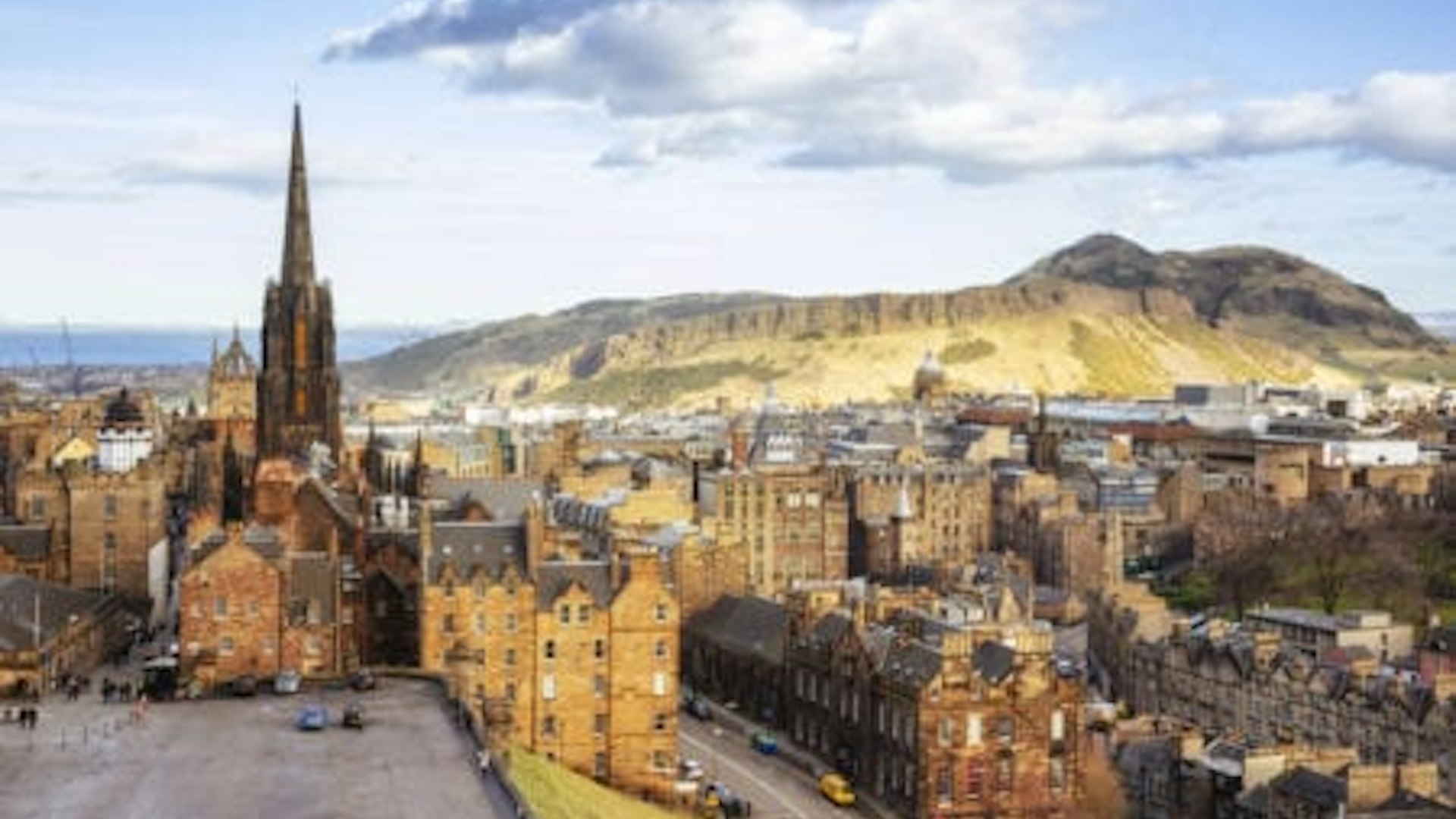
A Brief History of Edinburgh: All You Need to Know About Scotland’s Historic City
19 November 2020 • 4 min read
Starting off as little more than just a few streets, Scotland’s capital city has since become one of the best places in the UK to live and study in. Brimming with art and architecture, it’s a city with a long, storied history, and a cultural clout to its name that was shaped over thousands of years of change.
And our residents at Haymarket accommodation, located 10 minutes away from the city centre, definitely get to experience the best of what Edinburgh has to offer, whether it’s the capital’s nightlife, its impressive collection of museums, or simply going for a stroll down its historic streets.
But how exactly did we get to the Edinburgh today that its inhabitants know and love? For those thinking of studying in this incredible city, we’ll take a look back through the ages to discover more about how we got to present-day Edinburgh and the changes, strife and upheaval it went through along the way.
Edinburgh’s beginnings
It may seem unnecessary to go back 350 million years when looking back at Edinburgh’s history, but it’s here where the city starts off. During this time, the slow movement and erosion of passing glaciers formed Arthur’s Seat, an extinct volcano located east of the city centre. Nowadays, it’s a popular tourist attraction, with many visitors spending the day roaming its hills and taking in some excellent views of the city below. Here, Celtic tribes become Edinburgh’s first occupants.
The city begins to take further shape when the Goddodin, descendants of the Brittonic tribes that once fought the Romans, build a small hillfort. Named “Dun Eiden”, meaning “the fort on the hill slope”, the fort is captured by invading Angles in the year 638, who rename it “Eiden Burh”.
Medieval and Renaissance Edinburgh
500 or so years later, King Malcolm III Canmore builds Edinburgh Castle in 1130, with his wife Queen Margaret building a chapel within its walls. Now the oldest building in the city, both the castle and its chapel can be visited today and remain a hugely popular tourist attraction.
It’s here in the 13th century that King Edward I captures the castle, a tale that was famously portrayed on the silver screen by the film Braveheart. After 18 years under the English, the castle’s tenants are finally kicked out in 1314. Ensuring no one else, especially the English, would even want the castle back, the King of Scots Robert the Bruce orders that the castle be left in a state of disrepair.
in 1437, Edinburgh becomes Scotland’s capital, replacing the previous capital of Scone. Despite its small size, the growing population results in vertical expansion; houses with an ever-increasing number of floors are built as a result, sometimes exceeding seven floors in height. Even today, these towering buildings – said to be primitive versions of later skyscrapers – loom high above the city centre’s curving alleyways.
Edinburgh in Georgian times
Political upheaval comes in the form of the signing of the Treaty of Union in 1706, which unites Scotland and England under the Unified Kingdom of Great Britain. The resulting “Enlightenment”, a period where vast numbers of buildings were built, sees the city boom as a centre for banking and financial matters. The creation of new buildings carries well on into the 1800s, making Edinburgh one of the most architecturally impressive cities in the world, a reputation that continues to this day.
This so-called New Town provides new areas to live and work north of the castle, seeing mass migration as residents desired to move away from the crowded high-rise buildings mentioned earlier, into the single homes of the New Town. Today, the New Town stands as Edinburgh’s main shopping area, stemming out from the base of Edinburgh Castle, and running along Princes Street, with all sorts of shops and eateries to check out.
Into Victorian Times…
During the 19th century, Edinburgh becomes second to Glasgow in the position of Scotland’s top city, since it was not a manufacturing centre. While industry flourishes in Glasgow, it seems to skip Edinburgh by, resulting in an area that’s largely populated by professionals – something that’s tended to remain to the present day.
Despite this, it continues to grow rapidly during the century; in the first half, its population grows by 70,000 alone! This growth in residents forces an improvement of amenities in the city, with the National Gallery and a number of monuments opening in the latter half of the century. The city also gains a railway, allowing for greater travel into and out of Edinburgh.
The present day
Following the end of the Second World War, Edinburgh’s prestige receives a significant boost in the form of the Edinburgh Fringe Festival. The world’s largest arts festival, it first began in 1947 and is said to have done more to put Edinburgh on the forefront of world culture than anything else in the city. Although comedy shows make up the largest format, attendees enjoy a range of other shows including theatre, dance, physical theatre, circus, cabaret and children’s shows, among many other styles of performing arts.
In the 1960s, the city was also being hastily torn down and rebuilt. It wasn’t until the New Town Conservation Committee, which formed in the 70s, stepped in that these attempted facelifts came to an end. Since then, its buildings have been restored using traditional methods, meaning both the city’s finest creations – and its rep as one of Europe’s most beautiful places to visit – remains firmly intact.
If you’re looking for a student living experience that offers more, head over to NIDO STUDENT to see our global properties or drop us a line on 0207 1000 100 for more information.
Share this post